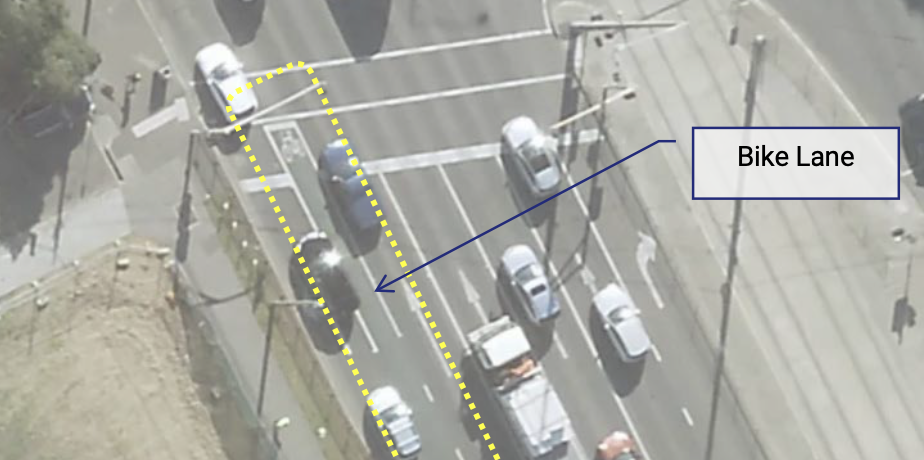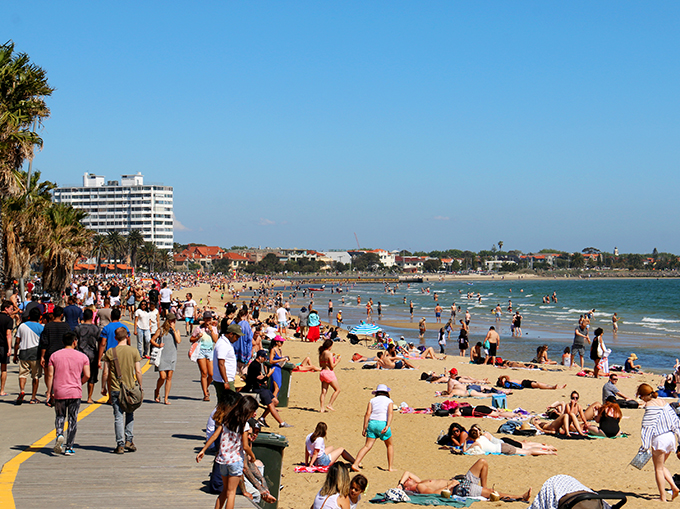In a report to the Municipal Association of Victoria (archived here), the Department of Transport and Planning say that the pop-up infra installed in Port Phillip and several other councils was a success.
(For those who came in late, or have somehow managed to wipe this episode from their memory: with Council consent, state Department of Transport put in a “pop-up infra” trial, mostly sharrows and kerb outstands, some of which was good and other parts a little weird. Complaints about the changes were blown up by tabloid media and some Councillors. Council demanded that all the changes be removed, before the trial could be completed and any evaluation made. State DoT removed the infra.)
The report says the program:
Provided safer routes for people on bikes. “Across the program, 65% of 702 survey respondents say the pop-up bike lanes have improved safety, with 9% saying safety has become worse.
People riding bikes were more likely to say the pop-up bike lanes had improved safety, compared to people driving or using public transport and people walking.
Across all modes, more people said safety had improved.”
Increased rider diversity, with more women riding
Increased bike volume. “Across all sites, volumes of people riding bikes increased by 6% following the installation of the pop-up bike lanes.
Ridership increased a further 11% between November 2022 and March 2023.
By LGA, these changes ranged from a 48% increase in Port Phillip to a 9% decrease in Moonee Valley.”
Safer vehicle speeds attract more bikes. “Across the four areas with pop-up bike lanes, there is a correlation between bike rider volumes and motor vehicle volumes, with an increase in bike riders associated with a decrease in motor vehicles.
Port Phillip performed best, with:
- 48% increase in bike trips
- 17% decrease in vehicle trips
- 10 % decrease in vehicle speed
Reduced rat-running
This is a very high level report, with no details of the methodology used, and the short time that the infra existed in Port Phillip should mean that we take it with a grain of salt. However, we see that preliminary evidence existed to show that the trial was safe and successful, contrary to the scare-mongering promoted by councillors.
Why is Council not following the evidence and building safe transport infrastructure?
In a massive understatement, the report says one of the lessons learned is that stronger support is required at Executive and Councillor level to champion active transport objectives.
The one remaining vestige of the trial (aside from the rough spots on the road where they had to physically remove painted bike symbols) is Marine Parade, where it is possible that the changes will become permanent—- depending on an upcoming community consultation. This is a state-controlled road, not a Council road.
The Beach Rd route is a special case— it’s heavily used by bunch riders, and when the protective bollards were first introduced, there were some crashes. The curbs (below) require that big bunches narrow down to 2 abreast. It would be good to see some data about whether these crashes were an artefact of the new arrangement, or whether the difficulty has persisted.
Intersection of Marine Parade and Glen Huntly Rd.
[Updated on 28 July to reflect that the Marine Parade changes are not yet locked in, and have yet to be consulted on.]






